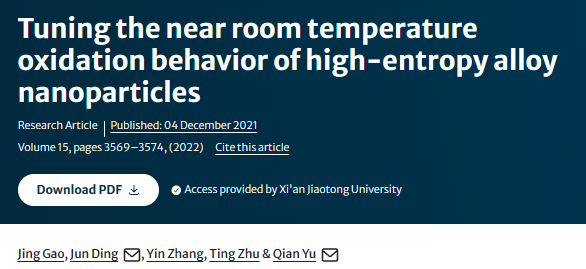
Understanding the oxidation behavior of high-entropy alloys (HEAs) is essential to their practical applications. Here we conducted in situ environmental transmission electron microscopy (E-TEM) observations of dynamic oxidation processes in CrMnFeCoNi and CrFeCoNiPd nanoparticles (NPs) near room temperature. During the oxidation of CrMnFeCoNi NPs, a favorable oxidation product was MnCr2O4 with the spinel structure. The surface nanoislands of MnCr2O4 underwent dynamic reconstruction, resulting in the thickened oxide layer with less crystallinity. In CrFeCoNiPd NPs, the reactive element Mn was replaced by the inert element Pd. As a result, a favorable oxide product was CrO2 with the rutile structure. CrO2 formed on the NP surface and was a result of Cr outward diffusion through the oxide layer. In addition, FeO nanocrystals formed at the oxide/metal interface and were a result of O inward diffusion through the oxide layer. We also performed first principles calculations to provide insights into the energetics and diffusion rates related to oxide formation. These results reveal the non-equilibrium processes of oxidation in HEA NPs that can be strongly influenced by small particle sizes and large surface areas. This work underscores the high tunability of oxidation behavior in nanoscale HEAs by changing their constituent alloying elements.
Link:https://link.springer.com/article/10.1007%2Fs12274-021-3900-3